Rachel Morrison provides her perspective of 'Seberg'
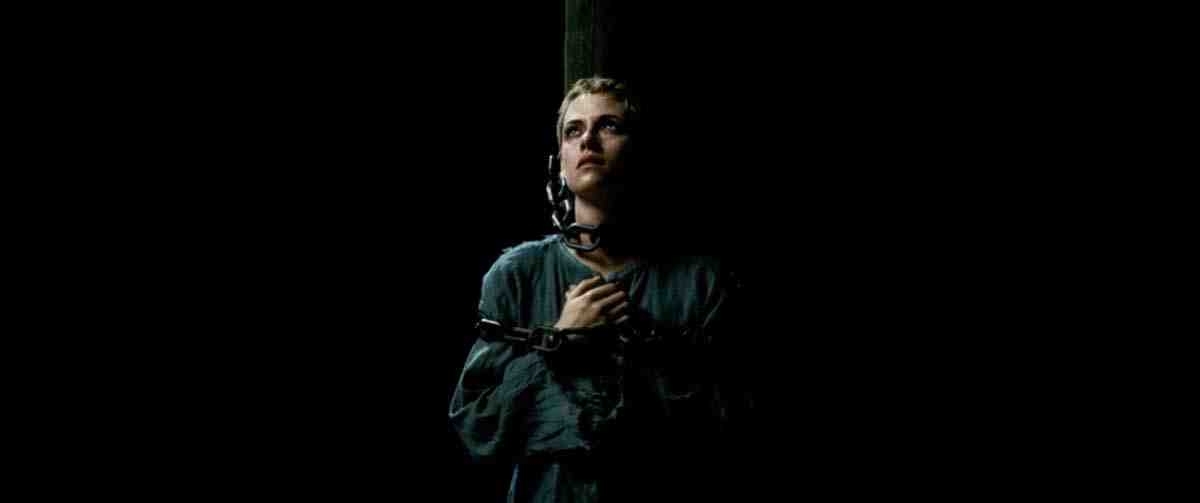
Rachel Morrison choose KODAK VISION3 500T Color Negative 5219/7219 500T because she wanted visible grain in the day work and out of necessity for shooting at night. Courtesy of Amazon Studios and Rachel Morrison.
An icon of French New Wave cinema gets involved with the Black Panther Party and is placed under surveillance by the FBI, which embarks on a harassment campaign that leads to her suicide. Such was the life of Jean Seberg who gained international acclaim for her performance in Breathless by Jean-Luc Godard and became a human rights activist during the 1960s. The tragic true story has been turned into a biopic called Seberg under the direction of Benedict Andrews (Una) who collaborated with actress Kristen Stewart (Personal Shopper) and cinematographer Rachel Morrison ASC (Mudbound). “Benedict was incredibly articulate about his vision for the film,” states Morrison. “He wanted to explore the themes of spectacle, public versus private persona, obsession, the balance between family and career, and being able to live a life you want versus what’s expected of you.”
“When we first met, Benedict presented six notebooks full of ideas and tons of visual references,” remarks Morrison. “He was interested in the paranoia films from the 1970s, like The Parallax View and Klute and how one photographs the watcher vs. the watched. “Some of the famous cinematic scenes featuring Seberg were recreated for the production. “That’s always a fun challenge, especially in this case because some of the stuff from Saint Joan [1957] was so degraded that you’re trying to put it together visually in your head. I got to shoot black and white 16mm and even 8mm at times. In general, I enjoy the challenge of trying to shoot a period film, even on a budget. We were fortunate enough to shoot on film, but the new stocks are very different than the film that was available in the 60’s and 70’s. How much further do we soften the image or flatten the contrast to give something a ‘vintage’ feel before it starts to feel forced? Older lenses definitely help as a jumping off point because even at a subconscious level the optics resonate with the past.”
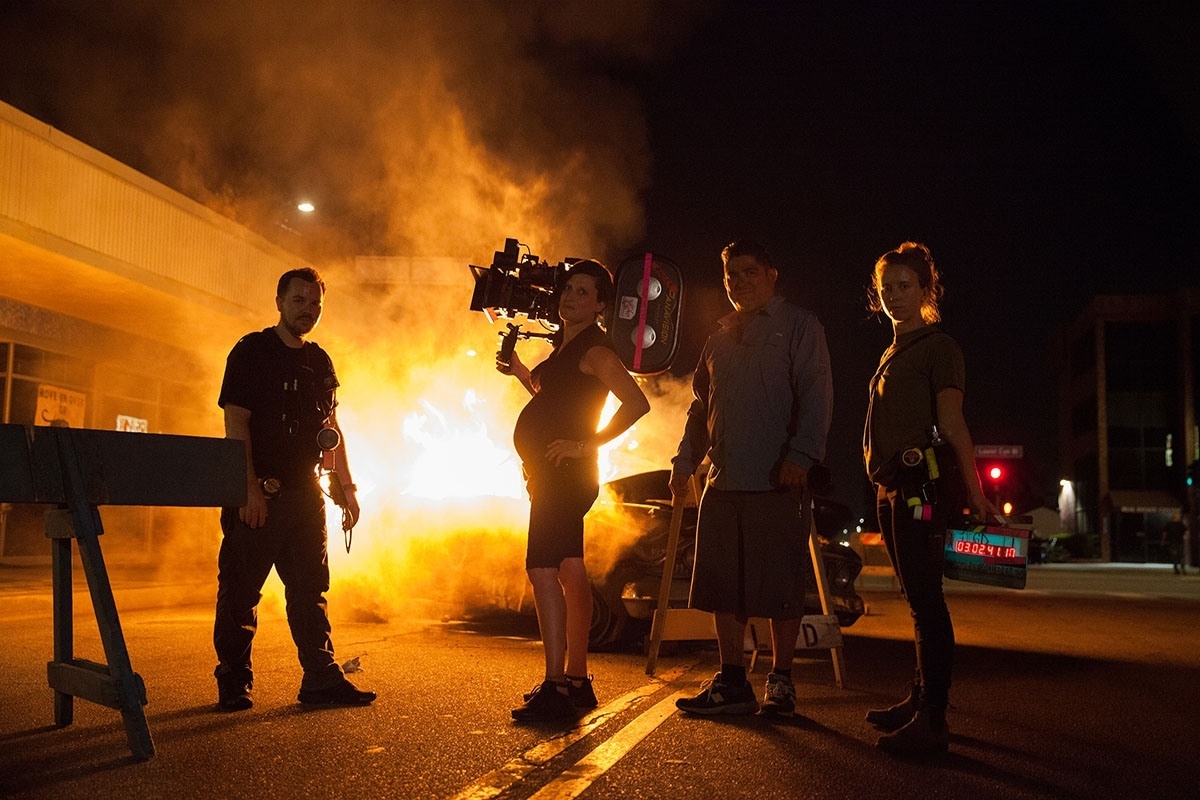
L to R: 1st AC Simon England, Rachel Morrison, Camera/dolly grip Ralph del Castillo and 2nd AC Natasha “Money Penny” Mullens. Courtesy of Simon England.
Thematically, it was important to separate the characters of Jean and the FBI agent responsible for her surveillance, Jack Solomon (Jack O’Connell). “We wanted to be incredibly subjective with Jean’s experience,” explains Morrison. “We were wide and tight most of the time, certainly when we’re with her. Anytime we wanted to imply that Jean was being watched or psychologically felt that she was being watched, we would pull back on a longer lens and shoot through some foreground. There was a real progression. From the beginning there is a fluidity, Steadicam, colour, life and movement. As her world gets blown apart, and her psyche shattered, the saturation starts to drain and it becomes more handheld and fragmented. A big theme is perception versus reality and how your mind can start playing tricks on you.”

Anytime Jean was being watched or psychologically felt that she was being watched, Rachel Morrison would pull back on a longer lens and shoot through some foreground. Courtesy of Amazon Studios and Rachel Morrison.
Shooting on film was an important part of the visual language. “Jean Seberg is a 60’s icon,” notes Morrison. “Everything about this film screamed to be shot on celluloid. Thankfully our producer Fred Berger was one of the champions for film. Usually, the producers are the ones who try to talk you out of it, but Fred really understood that especially because we were on a tight budget, celluloid would give the film an inherent period feel and lend much needed production value and scope. Benedict had never worked with film before and was a little bit nervous about what that would mean to him. He is a theatre director and used to running things as many times he wants and improv when necessary. We shot a few tests and Benedict immediately saw the advantage of film.”
Footage was captured on KODAK VISION3 500T Color Negative 5219/7219. “I choose 500T because I wanted visible grain even in the day work and also out of necessity for shooting at night,” remarks Morrison. “We were shooting anamorphic so lighting to f2.8 on most of our lenses required a deeper ASA. Ironically, the 35mm stocks designed to compete with digital are less grainy. For me, part of the beauty of film is in the granularity. I find that the lower ASA stocks are beautiful in their own way but I wanted that tactile palpable organic structure to it.” The opening audition with filmmaker Otto Preminger was shot with black and white 16mm. “All we had to go off of was a degraded version from YouTube, but you could clearly see how open and eager and doe-eyed Jean was as a 17-year-old from Idaho just hoping that maybe someday she would have the chance to act in a Hollywood film. We tried to match this audition as closely as possible to set Kristen Stewart up for the massive deconstruction to come.”

The opening audition Jean Seberg had with filmmaker Otto Preminger was shot with black and white 16mm and staged to emulate the actual degraded version on YouTube. Courtesy of Amazon Studios and Rachel Morrison.
“All of the references that Benedict had been drawn to were 2.39:1,” states Morrison. There is something filmic about widescreen and this movie is a love letter to Hollywood as much as anything else. It is symbolic of the aspiration of ‘making it’ but also felt like the right format to convey the isolation as the character starts to feel adrift in the world. You can do so much with widescreen when it comes to conveying the contrast between freedom and claustrophobia. You can trap or minimize your subject by compressing them up against one side of the frame.” The recreation of Breathless was photographed on Super 16mm and cropped to a 1.33:1 aspect ratio which was then filmed in 4 perf 35mm. “We had two Panaflex Millennium XL2 cameras but I always treated Seberg as a single camera show. You light for and hero the A camera. If there is a place for a B camera that would be helpful then by all means. When you’re shooting film, it becomes more precious. You’re not just spraying and praying. Every foot in the mag counts. You always want to make sure that the B camera is adding something and not compromising the A camera.”
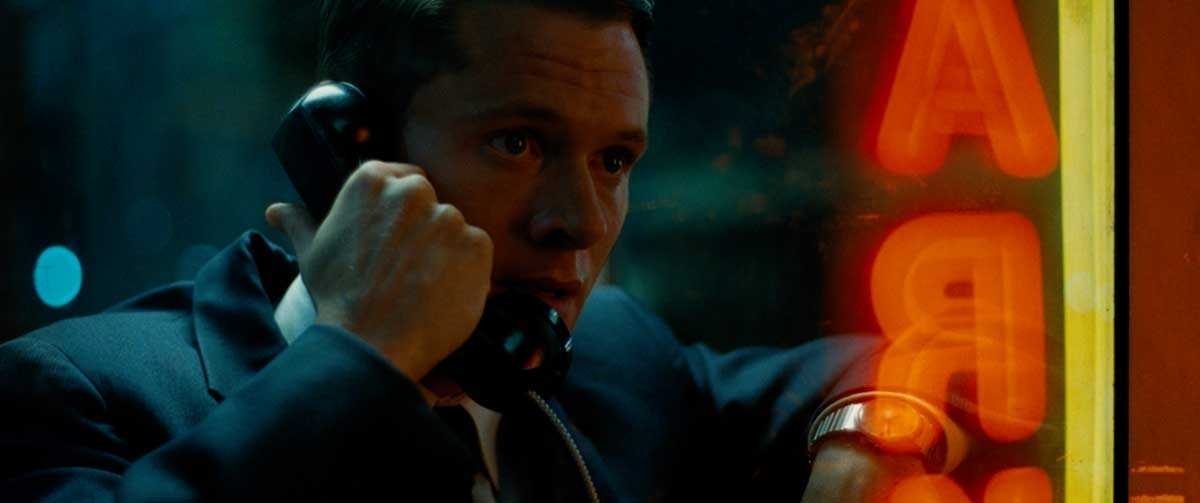
While operating the A camera, Morrison was late into her pregnancy for her second child. “Honestly I had an easy pregnancy so it really wasn’t any different than shooting under normal circumstances. The only complication was a few handheld shots where I would start standing, crouch down and then stand up again in shot. I was carrying so much extra weight between the camera and the baby that I needed one to two grips to help me stand back up from a crouching position.” Key crew members were Steadicam operator James Goldman, first AC A camera Simon England, first AC B camera Sarah Brandes, gaffer Jeff Murrell, and key grip Richard Mall. The native of Cambridge, Massachusetts favored Panavision C Series Anamorphic Primes. “I love the imperfections and how analogue they feel. Every piece of glass is different from the next. The flares and softening around the edges are so distinct to each optic and that irregularity feels very natural to me. I supplemented with some spherical glass that was also vintage. Zeiss Ultra Primes and Super Speeds from the 60’s and 70’s that were detuned to match the C series. That was mostly for the speed. If we need a faster stop at night we would shift to spherical and occasionally the anamorphic flares did not feel right. The 40mm and 50mm anamorphic were our hero lenses.”
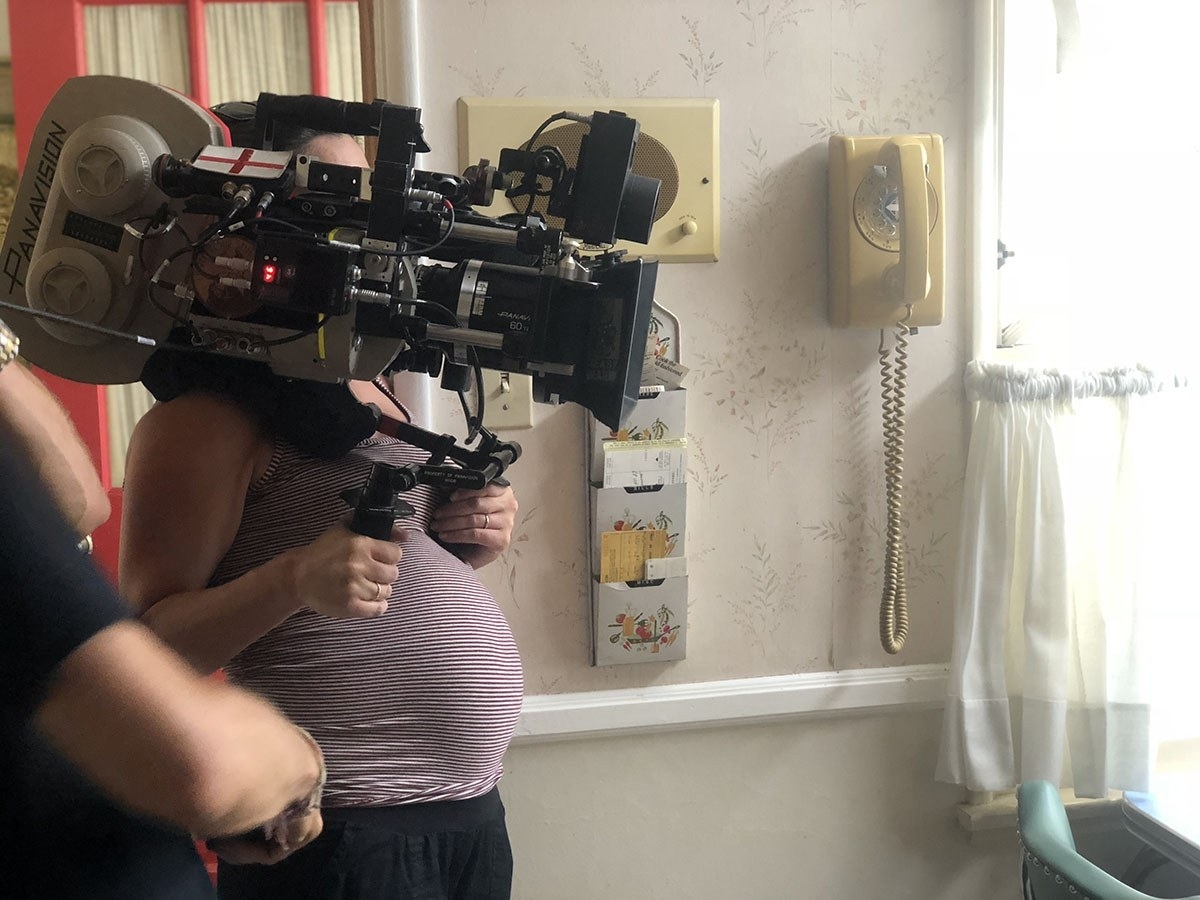
While operating the A camera, Rachel Morrison was late into her pregnancy for her second child. Courtesy of Simon England.
Seberg was primarily location-based. “The script that I read begged to be a little bit bigger in terms of going to Paris and New York City,” notes Morrison. “Those things were quickly on the chopping block. We did one or two days on a stage. Jean’s audition was a stage for a stage. It may as well be a location shoot. Even if you find an interior that works any window looks out onto a world that is modern. Some of it becomes window treatments and dressing. As soon as you close off the world you lose the layers and depth of a location. Our production designer Jahmin Assa did an incredible job. The FBI underground headquarters was in the basement of the old Los Angeles Times building. It was this bright basketball court/ loading dock and to see what it became was a real testament to Jahmin and to my rigging crews who rigged all of the practicals hanging from the ceiling so we could have a spottier more contrasty feel.”
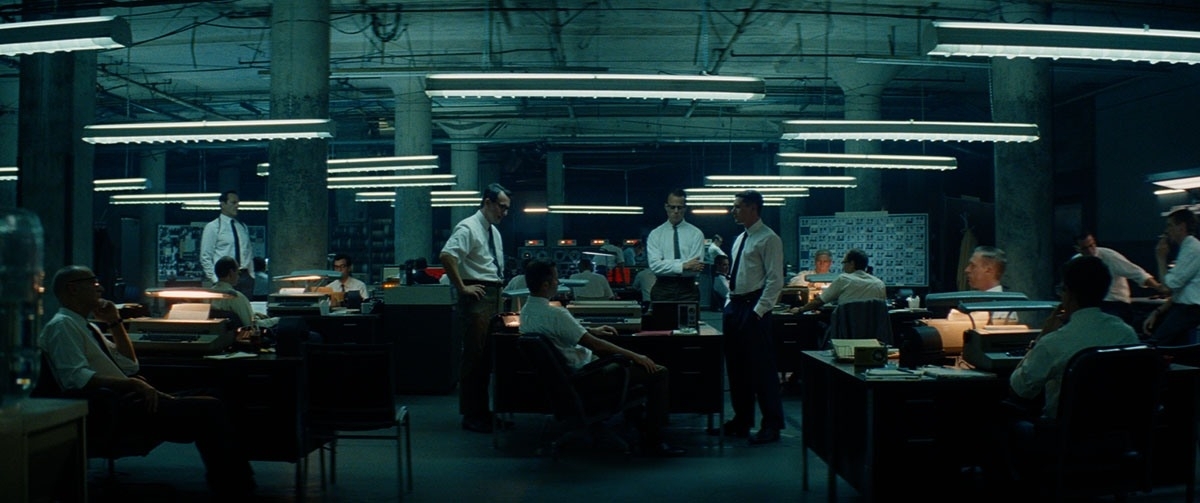
The basement of the old Los Angeles Times building was dressed as the underground headquarters of the FBI. Courtesy of Amazon Studios and Rachel Morrison.
Tungsten lights served as the basis for nighttime photography while HMIs were predominantly utilized for daytime scenes. “I’m quite over the color lighting just because you can with LEDs,” states Morrison. “Everything becomes turquoise and magenta but that doesn’t mimic real life and certainly didn’t feel right for Jean’s world which at the time was arc lights and incandescent filaments. We had a couple of 18Ks, Jo-Lekos for bounce skips, and LEDs as a softer source for a highlight or wrap around from the interior. I do most of my lighting as a base from outside and try to keep the gear out of the actors’ way as much as possible. Once you’re in a tighter reverse shot then I’ll bring something in to supplement.”
Customized gear was needed for the shot when the camera follows Seberg into the water. “The driveway to the house we were shooting in was so steep that we couldn’t get a hydroscopic underwater crane to where we wanted it to be,” explains Morrison. “We had a fixed arm crane on dolly track and the grips had to weight it down on the backend to be above water. Two other grips had to catch the crane to pull it underwater. It was more about figuring out the logistics of that. It had to be wrapped in order to be made waterproof because we were taking a piece of equipment that wasn’t designed to be underwater. There are also poly bounces that the lighting crew comes up with for the small spaces. In one location, we had no windows and I wanted there to be. We had to figure out how to take a flat space and blow it out.”

Grips weighted a fixed crane on the backend to be above while two other grips had to catch the crane to put it underwater. Courtesy of Amazon Studios and Rachel Morrison.
Getting a quick turnaround for dailies was not a problem. “The nice thing about shooting on film in Los Angeles is that we got things processed overnight at Fotokem and EFILM,” states Morrison. “I would at least have stills from colorist Matt Wallach by the next morning, and we would communicate over lunch,” remarks Morrison. “For the most part they were good to go but occasionally I would have a note or two before we went to dailies. Mitch Paulson did the final color. It was really just about fine tuning in the DI. “Most directors get so used to what they’re looking at in the edit that re-imagining something in final color becomes a battle. It’s important to me to get dailies as close to my desired result as possible so everyone grows accustomed to exactly how I wanted the shot to look like in the first place. It’s about communicating with the dailies colorist. I did as much in-camera as I could. In addition, I wanted to treat celluloid as if you’re using printer lights and keep it simple. Because it is a homage to a time those were the tools that they had so you want to do things as close to the same way as possible.”
This was not a visual effects intensive show. “We painted out a few modern cars or signs here or there but there were only a few bigger visual effects elements,” states Morrison. “We couldn’t afford a period plane. When Jack surveils Jean disembarking from her flight in Los Angeles, we had the passengers descend period accurate stairs against a backdrop of blue and a shadow-maker and composited the plane in. We supplemented a few flames closer to Jean in the Joan of Arc scene. Just little things like that but not too much.” Part of the attraction of Seberg was getting the opportunity to work with Kristen Stewart. “I thought Kristen was an interesting choice to play Jean because she has lived so much of her life in the public eye as well. At such a young age she was engaged in many public ‘scandals’ which to me raises the question ‘What right do we have to cross from her screen presence to her private life?’ Her performance is really quite stunning.”
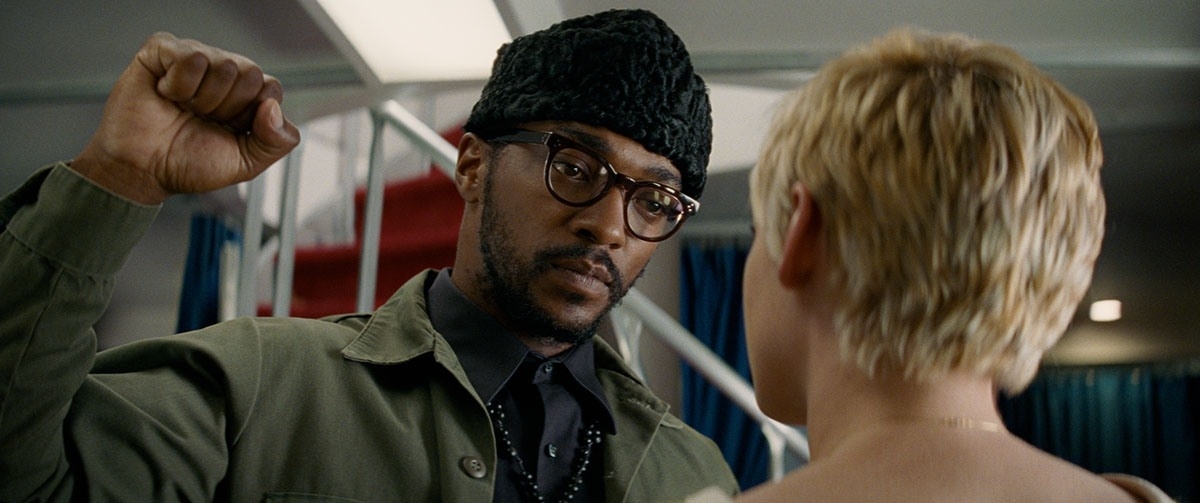
Rachel Morrison was impressed by the onscreen chemistry between Anthony Mackie and Kristen Stewart. Courtesy of Amazon Studios and Rachel Morrison.
“Our supporting cast which included Margaret Qualley, Zazie Beetz, Anthony Mackie, Jack O’Connell, and Vince Vaughn were each incredible to work with,” remarks Morrison. “The chemistry between Anthony and Kristen was amazing; they brought so much life to the screen.” When asked about her favorite shot in the film, the Academy Award-nominee replies, “I’m partial to the underwater shot because its unexpected. You’re with Jean for so long above water, but its this fluid moment and then suddenly you descend below the surface with her.” Any other surprise takeaways from the film? “Benedict was obsessed with mirrors. There is a theme about reality versus perceived reality versus someone’s fractured reality. While I think that there are twice as many mirror shots than we needed they’re admittedly quite beautiful.”